5 Things To Know About Apple’s M1 Pro, M1 Max Chips For MacBook Pro
Apple is promising ‘dramatically more performance’ and ‘significantly less’ power draw than comparable Intel CPUs with its new M1 Pro and M1 Max chips that go inside the new MacBook Pro laptops. CRN reviews the most important things you should know.
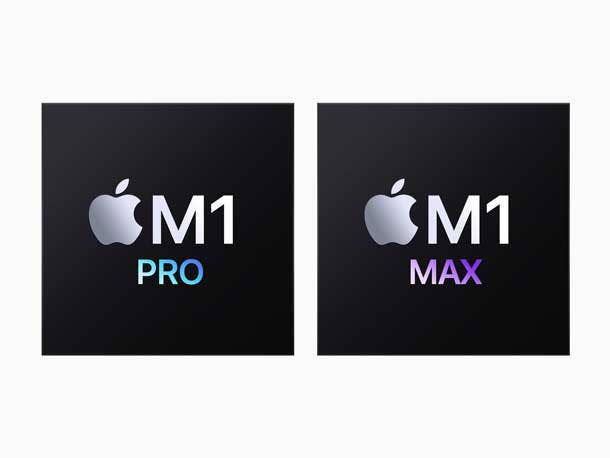
Continuing Apple’s Transition Away From Intel
Apple is equipping its “powerful” new MacBook Pro laptops with not one but two types of new M1 chips — the M1 Pro and the M1 Max — and the company is promising “dramatically more performance” and “significantly less” power draw than comparable Intel processors.
[Related: 8 Big Features On Apple’s New MacBook Pro Models (With M1 Pro, M1 Max)]
The Cupertino, Calif.-based company revealed the high-performance M1 variants at its virtual Unleashed event Monday as it completed its first year in what Apple CEO Tim Cook called a “two-year transition” from using Intel processors to chips designed in house for Mac computers. Prior to today’s reveal, rumors suggested that the new M1 Pro, M1 Max or both chips were going to be known as M1X.
“These are the most powerful Mac notebooks we‘ve ever built, and the best example yet of the extraordinary performance and capabilities we can deliver when we combine our most advanced Apple silicon with the power of macOS,” Apple CEO Tim Cook said of the new MacBook Pro 14- and 16-inch models that are powered by the company’s M1 Pro and M1 Max chips.
Pat Gelsinger, who became Intel’s CEO earlier this year, recently said in an interview with CRN that he’s turning his focus to enabling ecosystems that compete with Apple. However, he told Axios that he would like Intel to design chips for Apple again, though he expects that won’t happen for a while.
What follows are five important things to know about Apple’s new Arm-based chips, including the specs for M1 Pro and M1 Max, competitive performance comparisons against Intel and Nvidia, and why Apple is calling the new chips unprecedented in the industry.
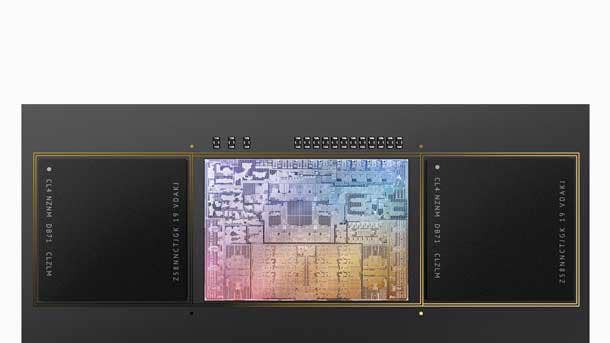
The Specs For Apple’s ‘Powerful’ M1 Pro, M1 Max Chips
As the names suggest, the M1 Pro and M1 Max are scaled-up versions of Apple’s M1 chip architecture that debuted in the company’s standard MacBooks last year. This largely means better performance for general-purpose compute, graphics and media compared to the standard M1 chip that powers the MacBook Air, the 13-inch MacBook Pro, 24-inch iMac and Mac mini.
Both chips are available in Apple’s new 14- and 16-inch MacBook Pro models, and Apple is as advertising the M1 Pro as more of the standard option for professional users while the M1 Max is meant for those who need even greater graphics and media capabilities.
The M1 Pro and M1 Max both have various configuration options, though only the M1 Pro has different choices for CPU core count, which consist of the performance cores and efficiency cores that are inherent to the M1 architecture’s hybrid CPU design.
As such, the M1 Pro has options for an 8-core CPU (6 performance cores, 2 efficiency cores) and a 10-core CPU (8 performance cores, 2 efficiency cores). For graphics, the M1 Pro can sport either a 14-core GPU or a 16-core GPU. The M1 Pro supports up to 32GB of unified memory with a memory bandwidth of 200GB/s. For media, the M1 Pro comes with a video decode engine, a video encode engine, a ProRes encode and decade engine as well as hardware accelerators for codecs like H.264 and RAW.
The M1 Max, on the other hand, only comes with the same 10-core CPU found on the M1 Pro. But for graphics, the M1 Max offers far more horsepower with options for a 24-core GPU or a 32-core GPU. The M1 Max supports up to 64GB of unified memory with a memory bandwidth of 400GB/s. For media, the M1 Max comes with the same hardware acceleration for codecs, but it has two video encode engines, two ProRes encode and decode engines in addition to a single video decode engine.
Both the M1 Pro and M1 Max come with a 16-core Neural Engine that is designed for on-device machine learning acceleration and improved camera performance.
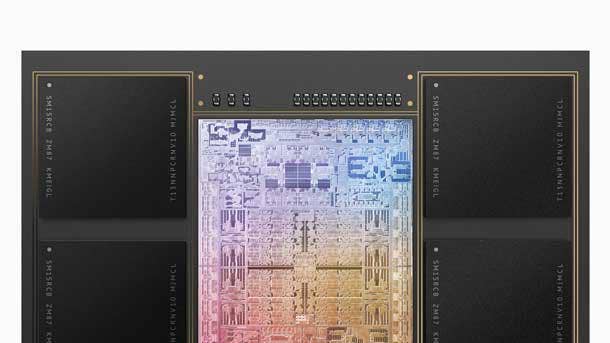
Apple Says M1 Pro, Max Designs Are Unprecedented
One of the major selling points of the M1 Pro and M1 Max chips is the fact that both chips are system-on-chip designs that incorporate the CPU and GPU on the same die, allowing the two processors to share the same pool of DRAM memory.
“No one has ever applied a system-on-a chip design to a pro system until today,” said Johny Srouji, Apple’s senior vice president of hardware technologies, at the company’s Unleashed event.
Srouji said the SoC designs of the M1 Pro and M1 Max are unprecedented because traditional computers for professional users come with a separate CPU and discrete GPU, both of which have distinct pools of memory.
“But a two-chip architecture requires much more power and cooling,” he said. “It also means the CPU and GPU have separate pools of memory, so they have to copy data back and forth over a slower interface.”
By having a SoC design with unified memory, the CPU and GPU of the M1 Pro and M1 Max can communicate with each other faster than a standalone CPU and discrete GPU can, according to Srouji.
For the M1 Pro, this means up to 200GB/s of memory bandwidth, which he said is nearly three times that of Apple’s original M1 chip. The M1 Max, on the other hand, supports up to 400GB/s of memory bandwidth, which is six times that of the M1.
As scaled-up versions of the original M1 chip, the M1 Pro and M1 Max also have larger memory capacities, with the former supporting up to 32GB and the latter up to 64GB.

The Implications Of Having Unified Memory Are Huge
Apple said the unified memory of its M1 Pro and M1 Max chips have major performance implications for applications for its new MacBook Pro models.
Craig Federighi, Apple’s senior vice president of software engineering, said the macOS operating system is designed to take advantage of the unified memory architecture. This will allow professional applications to “manipulate huge images or video streams and move them between the CPU and GPU with zero copies for breathtaking performance.”
Sruthi Haldea, Apple’s Mac product line manager, took the superlatives even further and said the unified memory architecture “enables workflows that were previously unimaginable on a notebook.”
She said this is the case because the latest professional PC laptops “top out” at 16GB of memory, which is one-fourth the new MacBook Pro’s maximum 64GB memory capacity that is enabled by M1 Max.
With the M1 Pro and M1 Max, applications have “dramatically more memory for the most demanding graphics tasks,” according to Haldea.
“No other notebook even comes close,” she said during the Unleashed event. “So this means that on MacBook Pro, 3D artists can now easily work with extreme geometry and textures and scenes that the latest pro PC laptops can‘t even run.”
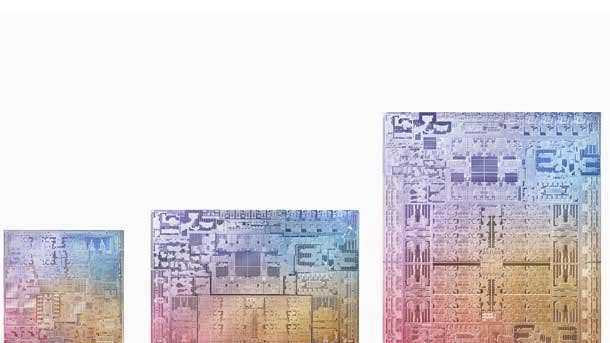
M1 Pro, Max Are Bigger, Faster Than M1
As these chips are made for Apple’s most powerful MacBooks, it should be no surprise that the M1 Pro and M1 Max are faster than the company’s first M1 chip that debuted last year.
Apple said the M1 Pro’s and M1 Max’s CPU delivers up to 70 percent more performance than the M1 while the M1 Pro’s GPU is up to two times faster and the M1 Max’s GPU is up to four times faster.
The M1 Pro features 33.7 billion transistors, which is more than twice the amount in M1. The M1 Max, on the other hand, is far bigger, packing 57 billion transistors, 3.5 times the amount in M1.
“It‘s the largest chip we’ve ever built by far,” said Srouji, head of Apple’s hardware engineering.
Both the M1 Pro and M1 Max are built using the 5-nanometer manufacturing process of TSMC, the Taiwanese chip manufacturer that also makes chips for AMD, Nvidia and, increasingly, Intel.
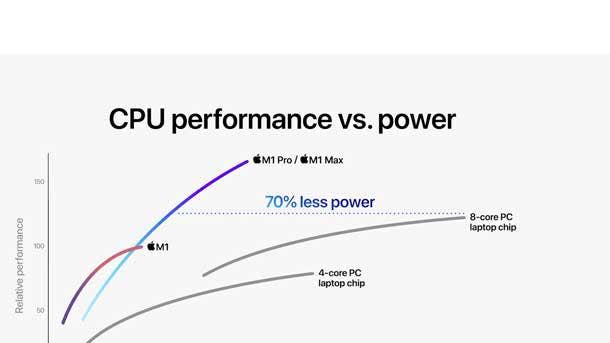
Performance, Efficiency Gains Over Intel, Nvidia
Apple said the 10-core CPU of the new M1 Pro and M1 Max is 1.7 times faster than an 8-core Intel Core i7 processor using the same power in a gaming laptop. Conversely, that same 10-core CPU uses 70 percent less power when running at the same performance level as Intel’s mobile CPU.
Srouji, head of Apple’s hardware engineering, called that a “big deal.”
“M1 Pro and M1 Max have higher performance at every power level,” he said.
When comparing the graphics capabilities, Apple’s lead extends even further. The company said the M1 Pro’s 16-core GPU is seven times faster than the integrated graphics of the same mobile Intel Core i7 processor. Compared to Nvidia’s GeForce RTX 3050 TI discrete GPU, the M1 Pro’s GPU can deliver more performance while using as much as 70 percent less power.
Srouji said the graphical capabilities of M1 Max’s 32-core GPU are even more impressive, offering comparable performance to Nvidia’s high-end GeForce RTX 3080 in a gaming laptop while using 40 percent less power. In a comparison to another high-end laptop with Nvidia’s GeForce RTX 3080, Srouji said M1 Max’s GPU offers similar performance while consuming 100 fewer watts.
The Apple executive said these comparisons attest not just to the prowess of the M1 Pro’s and M1 Max’s graphical capabilities but also to their efficiency, which will give the new MacBook Pro models better battery life compared to PC laptops.
“And this remarkable efficiency means M1 Max performance is outstanding, plugged in or using the battery,” Srouji added.